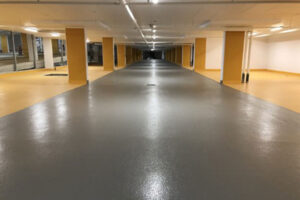By Mathieu Verronneau, ing. & Paul Hanratty, MBA
Condominium Parking Garage Maintenance
Introduction
Your parking garage, if not maintained properly, can be one of the most expensive costs to your Condominium Corporation. Repairs to your garage can cost millions of dollars and create massive disruption over multiple years to the quiet enjoyment of your home and investment.
Background
The National Building Code Standard for Parking Structure construction and protection is CSA S413, “The Canadian Parking Standard”. This building code document provides guidance for designers and builders of parking structures. The current issue of this standard is a highly informative document but falls short in several areas related to protection of structural elements within parking structures. Deterioration of structural elements like columns, slabs, ledge beams etc., accelerates quickly if these elements are not protected. De-icing salts greatly accelerate the deterioration of unprotected structures.
One can find all details on this standard at:https://www.csagroup.org/store/product/S413-14/
Historic Building Process
Condominium structures are built by property developers and in most urban settings the parking garage is generally underground. Developers have a two-year obligation to the Condominium Corporation covering non-structural and non-life safety components of the building. This includes waterproofing structural elements in the parking garage and elsewhere. The short warranty period incentivizes some developers to install the minimum protection required by the building code. The current code only requires that elevated slabs be protected by an elastomeric membrane and traffic bearing surface. It does not require that the Architect or Designer of structural protection systems design for durability. This lack of guidance in the building code will be changed significantly with the new iteration of CSA S413:21, due to be released later in 2021. The new code will require that deck membrane systems be designed to receive four distinct levels of…




